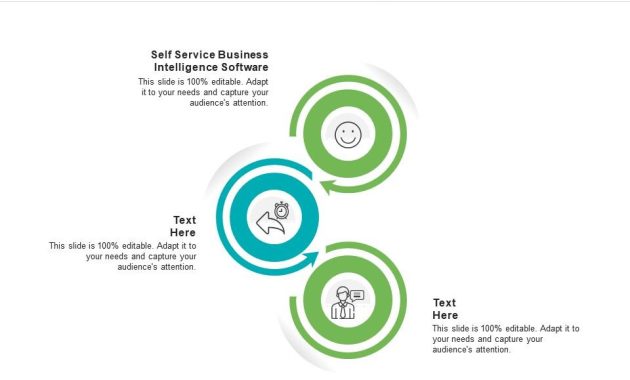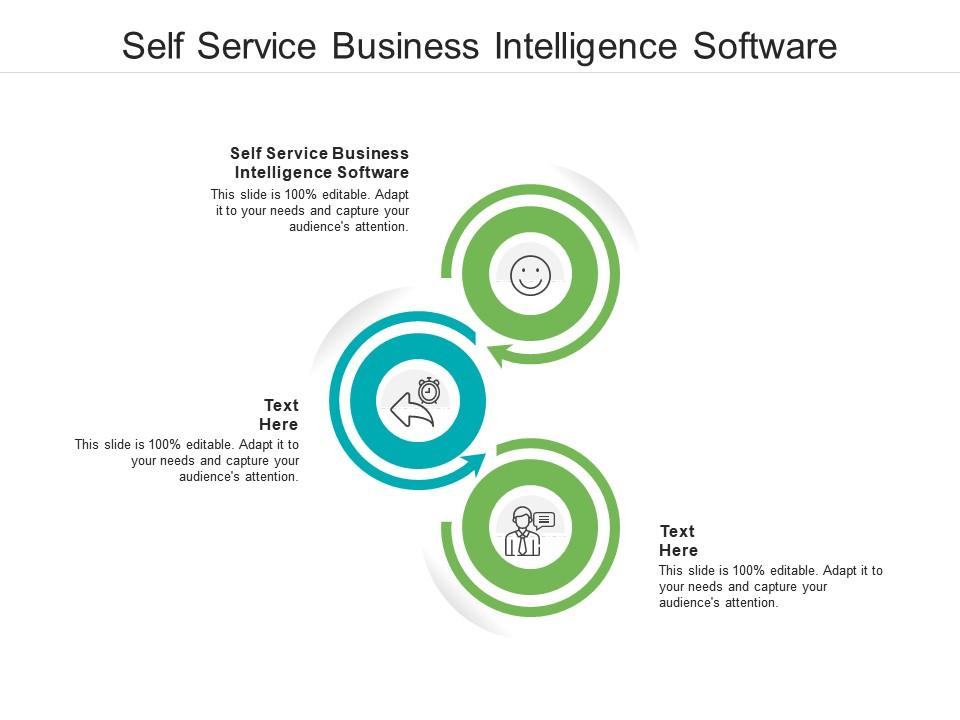
Self-Service Business Intelligence Software That Scales: Navigating the Data Landscape
In today’s data-driven world, businesses are drowning in information. The challenge isn’t just collecting data; it’s turning that data into actionable insights. This is where self-service business intelligence (BI) software that scales comes into play. It empowers users to analyze data independently, without relying heavily on IT or data science teams. This article will explore the benefits, features, and considerations of implementing scalable self-service BI, providing a comprehensive guide for businesses looking to harness the power of their data.
The promise of self-service business intelligence software that scales is significant. It allows organizations to democratize data access, fostering a culture of data-driven decision-making. When employees across departments can easily access and understand data, they can identify opportunities, solve problems, and improve performance more effectively. But choosing the right solution, one that truly scales with your business needs, is critical.
Understanding Self-Service Business Intelligence
Self-service BI is all about empowering business users to explore and analyze data on their own. Unlike traditional BI, which often requires specialized skills and lengthy development cycles, self-service BI tools offer intuitive interfaces and pre-built visualizations. This allows users to create their own reports, dashboards, and analyses without needing to write complex code or rely on IT for every request.
Key features of self-service BI typically include:
- Intuitive User Interface: Drag-and-drop functionality and user-friendly dashboards.
- Data Connectivity: Ability to connect to various data sources, including databases, cloud services, and spreadsheets.
- Data Visualization: A wide range of charts, graphs, and maps to represent data visually.
- Data Exploration: Tools for filtering, sorting, and drilling down into data to uncover insights.
- Collaboration: Features for sharing reports, dashboards, and insights with others.
The Importance of Scalability
Scalability is a crucial consideration when choosing self-service business intelligence software. As your business grows, so does the volume of data you generate and the number of users who need access to it. A scalable solution can handle increasing data volumes, user loads, and complexity without compromising performance. Without scalability, your BI system can become a bottleneck, hindering decision-making rather than supporting it.
Scalability in self-service business intelligence software manifests in several ways:
- Data Storage and Processing: The ability to handle large datasets and complex calculations efficiently.
- User Capacity: Supporting a growing number of users without performance degradation.
- Data Source Integration: Compatibility with a wide range of data sources and the ability to easily add new ones.
- Performance: Maintaining fast query response times and report generation, even with increased data and users.
Key Features to Look for in Scalable Self-Service BI Software
Selecting the right self-service business intelligence software that scales requires careful evaluation of its features. Here are some key aspects to consider:
Data Connectivity and Integration
The software should seamlessly connect to a variety of data sources, including databases (SQL Server, Oracle, MySQL), cloud platforms (AWS, Azure, Google Cloud), and other business applications (Salesforce, SAP, etc.). The ability to integrate data from diverse sources is vital for a comprehensive view of your business.
Data Modeling and Transformation
Robust data modeling capabilities allow you to clean, transform, and prepare data for analysis. Look for features like data cleansing, data blending, and the ability to create calculated fields and custom metrics. This ensures data accuracy and consistency.
User Interface and Ease of Use
The software should have an intuitive, user-friendly interface that allows business users to easily create reports, dashboards, and visualizations. Drag-and-drop functionality, pre-built templates, and interactive dashboards are essential for a positive user experience.
Data Visualization and Reporting
A wide range of visualization options (charts, graphs, maps) is crucial to effectively communicate data insights. The software should also provide flexible reporting capabilities, allowing users to create custom reports and dashboards tailored to their specific needs.
Performance and Scalability
The software must be able to handle large datasets and a growing number of users without performance degradation. Look for features like in-memory processing, data caching, and optimized query performance.
Security and Governance
Data security is paramount. The software should offer robust security features, including user authentication, role-based access control, and data encryption. Data governance features help ensure data quality and compliance with regulations.
Collaboration and Sharing
The ability to share reports, dashboards, and insights with others is essential for collaboration. Look for features like commenting, data alerts, and the ability to embed dashboards in other applications.
Benefits of Implementing Scalable Self-Service BI
Investing in self-service business intelligence software that scales offers numerous benefits:
- Improved Decision-Making: Access to real-time data and insights empowers better-informed decisions.
- Increased Efficiency: Automating reporting and analysis frees up IT and data science teams.
- Enhanced Collaboration: Sharing insights across departments fosters better communication and alignment.
- Cost Savings: Reduces reliance on expensive IT resources and manual reporting processes.
- Faster Time to Insights: Enables quick identification of trends, opportunities, and risks.
Choosing the Right Self-Service BI Solution
Selecting the right self-service business intelligence software is a crucial decision. Consider these factors:
- Your Business Needs: Identify your specific data analysis requirements and reporting needs.
- Data Volume and Complexity: Assess the size and complexity of your data.
- User Skill Levels: Choose a solution that aligns with the technical skills of your users.
- Budget: Evaluate the cost of the software, including licensing, implementation, and maintenance.
- Scalability Requirements: Ensure the software can handle your current and future data and user growth.
- Integration Capabilities: Verify the software can connect to your existing data sources.
- Vendor Reputation: Research the vendor’s reputation, customer reviews, and support options.
Implementation Best Practices
Successful implementation of self-service business intelligence software that scales involves several best practices:
- Define Clear Goals: Establish specific objectives for your BI implementation.
- Data Governance: Implement data governance policies to ensure data quality and consistency.
- User Training: Provide adequate training to users on how to use the software effectively.
- Pilot Program: Start with a pilot program to test the software and gather user feedback.
- Iterative Approach: Implement the software in phases, gradually expanding its scope.
- Monitor Performance: Continuously monitor the performance of the software and make adjustments as needed.
- Provide Ongoing Support: Offer ongoing support and training to users.
Examples of Self-Service BI Software
Several self-service business intelligence software solutions are available. Some popular options include:
- Tableau: Known for its powerful visualization capabilities and user-friendly interface.
- Microsoft Power BI: A comprehensive BI platform that integrates with Microsoft products.
- Looker: A data analytics platform that emphasizes data modeling and collaboration.
- Qlik Sense: Offers associative data modeling and advanced analytics features.
- Sisense: Focuses on ease of use and data-driven insights.
Each solution has its strengths and weaknesses, so it’s essential to evaluate them based on your specific needs and requirements. Consider which self-service BI software aligns best with your business goals.
The Future of Self-Service BI
The future of self-service business intelligence software is bright. As businesses generate more data than ever, the demand for accessible and scalable BI solutions will continue to grow. Key trends shaping the future include:
- Artificial Intelligence (AI) and Machine Learning (ML): Integration of AI and ML to automate insights and provide predictive analytics.
- Cloud-Based BI: Increased adoption of cloud-based BI platforms for scalability and cost-effectiveness.
- Mobile BI: Growing demand for mobile BI solutions, allowing users to access data on the go.
- Data Literacy: A greater emphasis on data literacy training to empower more users to analyze data.
The evolution of self-service business intelligence software that scales will continue to transform how businesses make decisions. By embracing these trends, organizations can stay ahead of the curve and unlock the full potential of their data.
In conclusion, self-service business intelligence software that scales is a powerful tool for businesses seeking to leverage their data. By choosing the right solution and following best practices, organizations can empower their employees, improve decision-making, and drive business success. The key is to select software that not only meets current needs but also scales to accommodate future growth. [See also: Related Article Titles]

